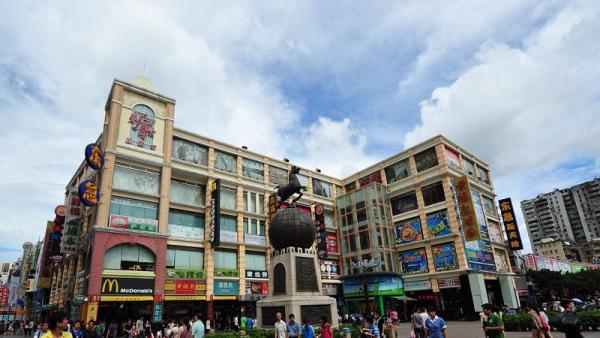Chinese consumers aren’t buying the ‘currency crisis’

James Laurenceson, Deputy Director, Australia-China Relations Institute, University of Technology Sydney |
This article originally appeared in the Business Spectator, February 18 2016.
Capital outflows are the latest sign of things to come according to China bears. Last year China’s foreign exchange reserves fell by $US513 billion. And in January, the People’s Bank of China spent another $US100bn defending the value of the renminbi.
To hear some commentators tell it, there’s been a dramatic shift in sentiment towards the world’s second largest economy and the best that Australia can hope for is that China will come to a slow, grinding halt rather than end with a crash.
But leave aside that China’s stockpile of foreign exchange reserves is still a staggering $US2 trillion bigger than Japan’s, the world’s second largest reserves holder.
Here’s the big reason why we shouldn’t be panicking: Chinese consumers aren’t buying into the negativity.
If China’s prospects are being written down, it’s not being done by those most closely connected to the action on the ground.
In 2015, consumption accounted for two-thirds of China’s GDP growth, up from half the year before.
The Westpac-MNI China Consumer Sentiment Index was up for the third straight month in January and now stands at a level higher than one year ago.
According to the Nielsen Global Consumer Confidence Report released earlier this month, Chinese consumer confidence currently ranks eighth highest out of 61 countries surveyed.
Leon Berkelmans from the Lowy Institute adds another good point. China’s foreign exchange reserves fell at a slower rate in January compared with December. Yet the start of a new calendar year provided Chinese households with the perfect opportunity to move their savings offshore. Each year Chinese individuals are legally entitled to send $US50,000 overseas. The numbers suggest few bothered to do so.
There’s a further test of the collective outlook of Chinese consumers that is closer to home.
Chinese households worried about their economic future do not suddenly start spending up big on discretionary items such as long-haul travel and stuffing their suitcases full of Australian wine, make-up and infant formula.
Yet last week, the Australian Bureau of Statistics said that more than one million Chinese tourists visited Australia in 2015, up 21.5 per cent on a year ago.
Their spending reached $7.7bn, an extraordinary jump of 35 per cent, double the growth rate in 2014.
At the beginning of the decade, Tourism Australia predicted that a best-case scenario would see Chinese tourists spending $9bn in 2020. Now they reckon that $13bn is more likely. Chinese tourists are expected to account for 44 per cent of the growth in total international tourist spending in Australia out to 2024-25.
It’s a global phenomenon. In fact, of the 120 million Chinese that went overseas last year, less than one per cent came to Australia.
Many lament that the peak in Australia’s “China resources boom” may have passed. The price of Australia’s biggest export to China, iron ore, is down 65 per cent since the beginning of 2014.
But the fact remains that even with the slump in iron ore prices, 57 cents in every dollar increase in Australia’s exports between 2009-10 and 2014-15 still came from China.
A “China dining and services boom” is only just beginning that could run for decades.
Driving this boom is China’s middle class, which Credit Suisse says numbered 109 million in 2015. That’s already 17 million more than in the US.
Research by the Brookings Institution suggests that between 2009 and 2030 China’s middle class could grow by more than 850 million, six times the population of Japan.
The wealth that has long been on show in China’s tier-one metropolises of Beijing, Shanghai, Guangzhou and Shenzhen is now spreading throughout the country.
McKinsey expects that by 2022, 84 per cent of China’s middle class will live outside these four cities.
In 2011, the only direct flights to Australia were from Beijing, Shanghai, Guangzhou and Shenzhen. Now there are direct flights from 11 Chinese hubs, including inland success stories such as Chengdu, Chongqing, Wuhan and Xian.
Australia’s education sector is also benefiting from the spread of China’s middle class. In each of the last two years the growth rate in student visa applications coming from China’s inland provinces has been higher than the traditionally wealthier coastal region.
Since the early 2000s, there’s been no brighter spot on Australia’s economic radar than China. Nothing’s changed.
Author
Professor James Laurenceson is Deputy Director of the Australia-China Relations Institute (ACRI) at the University of Technology Sydney.

